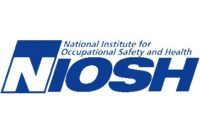Preventing opioid use disorder in the mining industry: NIOSH, MSHA release workplace solutions guide

Photo credit: iStock / Getty Images Plus
The National Institute for Occupational Safety and Health (NIOSH) and the Mine Safety and Health Administration (MSHA) have collaborated for several years in assisting mine operators and workers to prevent and recover from opioid use disorder (OUD) and raise awareness within the mining industry. Today, the agencies released a new guide, Implementing Effective Workplace Solutions to Prevent Opioid Use Disorder: A Resource Guide for the Mining Industry. The guide is unique in that it provides a structure by which employers can assess, plan, and implement strategies and practices that support mine worker mental health and address harmful opioid use.
Workplace programs are effective strategies employers can implement to improve workers’ overall health and well-being.
“The mining industry has been particularly hard hit by the epidemic of fatal drug overdoses, especially deaths related to opioid use, which has had a significant impact on mine workers, their families, and communities,” said John Howard, MD, Director of NIOSH. “NIOSH has joined with MSHA in a new resource guide for mine operators that meets their needs, effectively tailors strategies, and provides ways to reduce the terrible toll from fatal opioid overdoses.”
Work-related pain and injury increase workers’ chances of being prescribed an opioid and subsequent risks of worker prescription opioid misuse, long-term opioid use, and OUD. Additionally, psychosocial risk factors at work (e.g., job insecurity, harassment, and isolation) can negatively affect an employee’s mental health, which can potentially contribute to harmful opioid use.
The good news: workplaces can be helpful settings to address these issues. The new resource guide offers actionable tools for mine operators and occupational safety and health managers to implement effective workplace prevention strategies, promoting a safe and supportive environment. It includes:
- Overviews of 10 distinct strategies that occupational safety and health managers can implement
- A Workplace Health and Well-Being Model to facilitate planning and implementation of these prevention strategies
- Evidence-based practices employers can use to get the most out of their prevention efforts
- Activities to consider for each prevention strategy for assessment, planning, implementation, and evaluation
- Links to existing resources to support assessment, planning, and implementation of prevention strategies
By providing this guide, NIOSH and MSHA hope to normalize conversations about OUD, reduce stigma, offer tools for prevention, and break down barriers to treatment and recovery supports for mine workers struggling with opioid use disorders.
To access the guide, please visit: Opioid Resource Guide | Mine Safety and Health Administration (MSHA). Find out more about the NIOSH Miner Health Program and NIOSH’s Mine Safety and Health research divisions.
NIOSH is the federal institute that conducts research and makes recommendations for preventing work-related injuries, illnesses, and deaths. For more information about NIOSH visit www.cdc.gov/niosh.
Looking for a reprint of this article?
From high-res PDFs to custom plaques, order your copy today!






